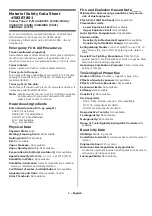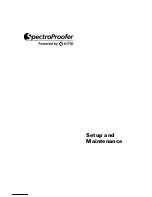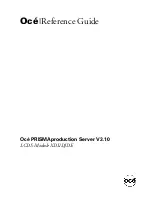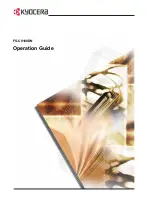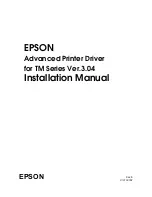
LPS CONNECTIONS
Figure 4-14.
PC Ethernet interface
Ethernet LAN
4890 HighLight Color
LPS
a a a a a a a a
a a a a a a a a
a a a a a a a a
a a a a a a a a
a a a a a a a a
a a a a a a a a
a a a a a a a a a a a a a
a a a a a a a a a a a a a
a a a a a a a a
a a a a a a a a
a a a a a a a a
a a a a a a a a
a a a a a a a a
a a a a a a a a
a a a a a a a a a a a a a
a a a a a a a a a a a a a
a a a a a a
a a a a a a
a a a a a a
PC with Ethernet card
Front end
processor
a a a a a
a a a a a
a a a a a
PC with Ethernet card
Communication protocols
Each PC on the Ethernet LAN requires its own Ethernet card. The
Ethernet TCP/IP print jobs are converted to Ethernet XNS print
jobs by the Entire FIBRE 400/600 front end.
A combination of Ethernet card and the Xerox XNS PC Plus 2.0
software package allows a PC to produce XNS protocol on
Ethernet. This configuration does not require a front end
provided it is used with software applications that produce LCDS
or Interpress data streams.
Data streams
Most of the application software running on a PC in this
configuration produces PostScript data streams. When using
PostScript applications, a front end is required to convert the
PostScript output.
Color specification
PostScript masters may contain full color specification, in which
case full color to highlight color mapping is required. The front
end performs the color mapping automatically when it converts
PostScript data to .IMG files. If printer colors are specified
through the use of a facsimile palette, the printed colors closely
match the displayed colors.
Other network interfaces
PCs may be connected to networks other than Ethernet, such as
Token Ring.
Communication protocols
Non-Ethernet networks require a communication module that can
convert to Ethernet. Generally, this type of communication
module converts the original network protocol to TCP/IP
protocol on Ethernet. This requires a front end that converts
TCP/IP to XNS.
XEROX 4890 HIGHLIGHT COLOR LPS PRODUCT REFERENCE
4-19































